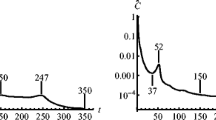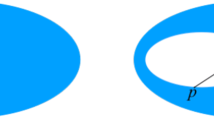Abstract
The engineering of grown systems poses fundamentally different system integration challenges than ordinary engineering of static designs. On the one hand, a grown system must be capable of surviving not only in its final form, but at every intermediate stage, despite the fact that its subsystems may grow unevenly or be subject to different scaling laws. On the other hand, the ability to grow offers much greater potential for adaptation, either to changes in the environment or to internal stresses developed as the system grows. I observe that the ability of subsystems to tolerate stress can be used to transform incremental adaptation into the dynamic discovery of viable growth trajectories for the system as a whole. Using this observation, I propose an engineering approach based on functional blueprints, under which a system is specified in terms of desired performance and means of incrementally correcting deficiencies. I explore how manifold geometric programming can support such an approach by simplifying the construction of distortion-tolerant programs, then demonstrate the functional blueprints approach by applying it to integrate simplified models of tissue growth and vascularization, and further show how the composed system may itself be modulated for use as a component in a more complex design.
Similar content being viewed by others
References
Aubin, J. P. (1991). Viability theory. Basel: Birkhauser.
Basu, S., Gerchman, Y., Collins, C. H., Arnold, F. H., & Weiss, R. (2005). A synthetic multicellular systems for programmed pattern formation. Nature, 434, 1130–1134.
Beal, J. (2004). Programming an amorphous computational medium. In Lecture notes in computer science: Vol. 3566. Unconventional programming paradigms international workshop (pp. 121–136). Berlin: Springer.
Beal, J. (2009). Flexible self-healing gradients. In ACM symposium on applied computing (pp. 1197–1201). New York: ACM.
Beal, J., & Bachrach, J. (2006). Infrastructure for engineered emergence in sensor/actuator networks. IEEE Intelligent Systems, 21, 10–19.
Beal, J., Bachrach, J., Vickery, D., & Tobenkin, M. (2008). Fast self-healing gradients. In ACM symposium on applied computing. New York: ACM.
Carmeliet, P. (2003). Angiogenesis in health and disease. Nature Medicine, 9(6), 653–660.
Carroll, S. B. (2005). Endless forms most beautiful: the new science of evo devo and the making of the animal kingdom. New York: W.W. Norton & Company.
Coore, D. (1999). Botanical computing: a developmental approach to generating inter connect topologies on an amorphous computer. Ph.D. thesis, MIT, Cambridge, MA, USA.
Couzin, I., Krause, J., Franks, N., & Levin, S. (2005). Effective leadership and decision making in animal groups on the move. Nature, 433, 513–516.
Dorigo, M., & Birattari, M. (2007). Swarm intelligence. Scholarpedia, 2(9), 1462.
Dorigo, M., & Stutzle, T. (2004). Ant colony optimization. Cambridge: MIT Press.
Doursat, R. (2008). The growing canvas of biological development: multiscale pattern generation on an expanding lattice of gene regulatory networks. In Proceedings of the 6th international conference on complex systems: Vol. 6. Unifying themes in complex systems. New York: Springer.
Kirschner, M. W., & Norton, J. C. (2005). The plausibility of life: resolving Darwin’s dilemma. New Haven: Yale University Press.
Kondacs, A. (2003). Biologically-inspired self-assembly of 2d shapes, using global-to-local compilation. In International joint conference on artificial intelligence (IJCAI). Menlo Park: AAAI.
MIT Proto (Retrieved November 22, 2010). MIT Proto. Software available at http://proto.bbn.com/.
Nagpal, R. (2001). Programmable self-assembly: constructing global shape using biologically-inspired local interactions and origami mathematics. Ph.D. thesis, MIT, Cambridge, MA, USA.
O’Grady, R., Christensen, A., & Dorigo, M. (2009). Swarmorph: multi-robot morphogenesis using directional self-assembly. IEEE Transactions on Robotics, 25(3), 738–743.
O’Grady, R., Christensen, AL, Pinciroli, C., & Dorigo, M. (2010). Robots autonomously self-assemble into dedicated morphologies to solve different tasks. In Proceedings of 9th international conference on autonomous agents and multiagent systems (AAMAS 2010) (pp. 1517–1518). Toronto: IFAAMAS.
Prusinkiewicz, P., & Lindenmayer, A. (1990). The algorithmic beauty of plants. New York: Springer.
Reynolds, C. (1987). Flocks herds, and schools: a distributed behavioral model. Computer Craphics (SIGGRAPH’87 Conference Proceedings), 21(4), 25–34.
Shetty, R. P., Endy, D., Thomas, F., & Knight, J. (2008). Engineering biobrick vectors from biobrick parts. Journal of Biological Engineering, 2(5).
Spicher, A., & Michel, O. (2006). Declarative modeling of a neurulation-like process. BioSystems, 87, 281–288.
Stoy, K., & Nagpal, R. (2004). Self-reconfiguration using directed growth. In Intl. symposium on distributed autonomous robotic systems (DARS). New York: Springer.
Werfel, J. (2006). Anthills built to order: automating construction with artificial swarms. Ph.D. thesis, MIT, Cambridge, MA, USA.
Werfel, J., & Nagpal, R. (2007). Collective construction of environmentally-adaptive structures. In 2007 IEEE/RSJ international conference on intelligent robots and systems (IROS 2007). Piscataway: IEEE.
Yamins, D. (2007). A theory of local-to-global algorithms for one-dimensional spatial multi-agent systems. Ph.D. thesis, Harvard, Cambridge, MA, USA.
Author information
Authors and Affiliations
Corresponding author
Electronic Supplementary Material
Below is the link to the electronic supplementary material.
Rights and permissions
About this article
Cite this article
Beal, J. Functional blueprints: an approach to modularity in grown systems. Swarm Intell 5, 257–281 (2011). https://doi.org/10.1007/s11721-011-0056-x
Received:
Accepted:
Published:
Issue Date:
DOI: https://doi.org/10.1007/s11721-011-0056-x




